People search on the internet for how to increase traffic. There are a number of ways to increase traffic to your website, but the most effective approach depends on the goals you’re hoping to achieve.
Some common methods include creating high-quality content, building an engaged audience, and targeting the right keywords.
What most people don’t realize is that there are three essential pillars of search engine optimization.
Miss any single one of them, and you will not get traffic on Google. In this blog, I’m going to show you this in action with a step-by-step case study, where we double the client’s traffic in just eight months.
My name is Matt Diggity, and I’m a director at The Search Initiative, an SEO agency that specializes in cutting-edge SEO.
And I’m about to give away our best SEO tactics, the same tactics that got this level of growth. But first, let me introduce a case study that I’ll be using to teach you these strategies.
LET’S START OUR SEO CASE STUDY
The client is a U.S based software company that offers cloud computing services to some of the biggest brands in the world. Samsung, Nissan, Electrolux, you probably heard of them.
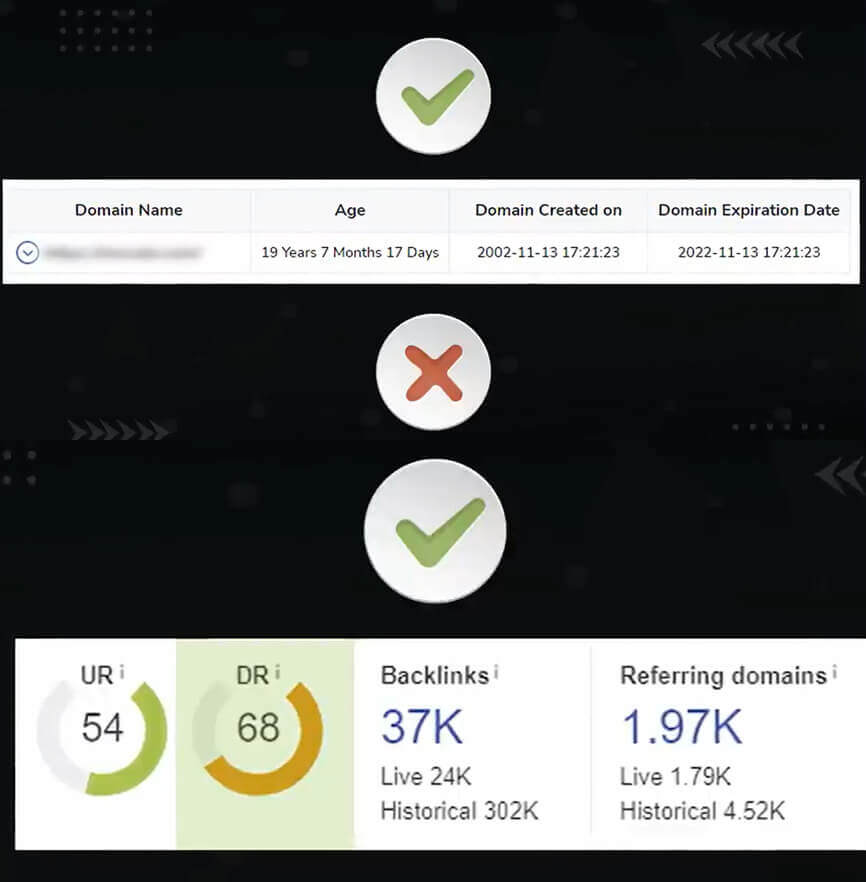
Now, this client’s domain has indeed been around for nearly 20 years, which is a good thing and a bad thing. It’s good because it racked up a sexy domain rating of 68 over this journey, which does a lot for the authority and trust of the website.
It’s bad because, over time, websites start to accumulate a whole bunch of SEO junk. Hell, I give my websites a complete spring-cleaning service every year. So, you can imagine how many SEO no-no’s racked up over 20.
3 PILLARS OF SEO

I’m gonna show you what you need to do to make sure your site is running to its full capacity unhindered by SEO debt. As I mentioned before, SEO can be broken down into three essential pillars. First, we have technical SEO.
We always start with technical SEO, because mistakes in this department can single-handedly be the cause for you not doing as well as you’d like in Google. This includes standards like having a fast website that looks good on mobile.
Next, we have content. The content you write on your website is the foundation of SEO. Many people argue that other ranking factors are more important than content.
Just try to get on page one of Google without writing that keyword in your content. Lastly, we have backlinks. The importance of backlinks is baked into Google’s algorithm.
GOOGLE PATENTS NODE RANKING METHOD
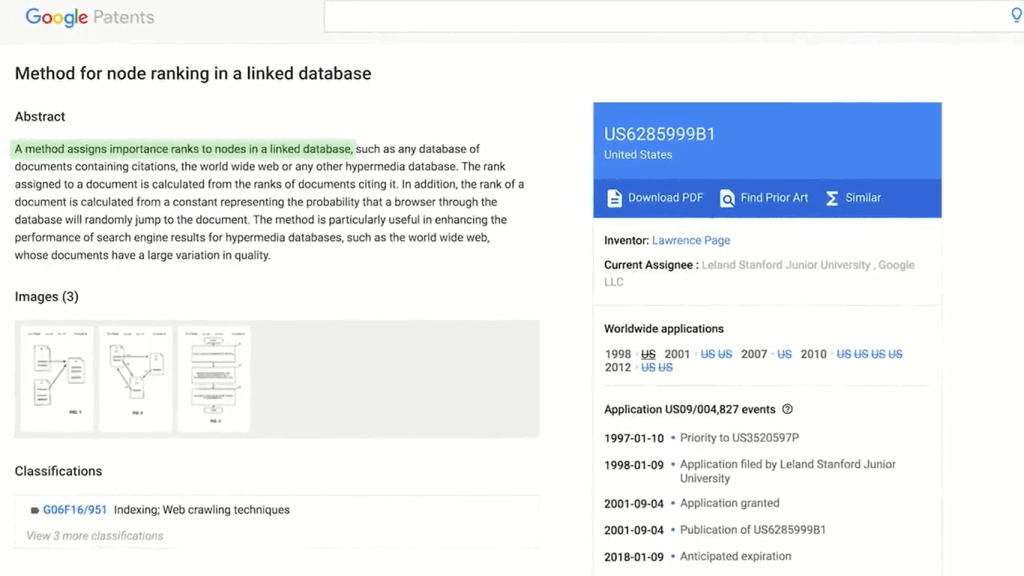
When Google founder Larry Page patented his page rank algorithm, Google committed itself to make links one of its most important ranking factors. So we have the three pillars of SEOs, technical, content, and links. Miss any one of these pillars, and you just put SEO in hard mode.
Let’s not play this game in hard mode. In fact, let’s make it so easy, it’s like using cheat codes. That’s the purpose of this video. And I’ll use a lens in this case study to illustrate these concepts.
Now, if you could do a favor for me could you please hit that share button? Hours of research and preparation went into making this content.
If you appreciate that effort, it would mean a lot to me if you smash the share button for the google algorithm, thanks a bunch.
TECHNICAL SEO

Why Start With Techincal SEO?
- Technical Errors Can Ruin Your Site
- It’s Fast And Easy.
Let’s kick things off with technical SEO. As I mentioned before, we always start off with technical SEO for two main reasons. First, because technical SEO problems cause so much havoc, they can single-handedly hold back your website.
You might have perfect content and links, but if you have one technical issue, you could end up on page 10 of Google. It’s good to cross this off your list right away.
You might not even need to work on your content and links. And secondly, because resolving technical SEO issues is quick and easy, just get it done and move on.
Crawl Budget Management
Let’s start with crawl budget management. What actually is the crawl budget? The way Google actually finds every website on the internet is by sending the Google bot, their web crawler, crawling through backlinks. This takes a huge amount of time and resources.
So to make sure their energy bill doesn’t get bigger than the U.S GDP, they assign a limit to how much they crawl each website.
The crawl budget of your website is determined by its size, how often it’s updated, its quality, and authority. If you have a website with hundreds or thousands of pages, you need to make sure you’re not wasting your crawl budget.
Don’t let the Google bot crawl pages that are low quality, or not meant for SEO. Our client had over 30,000 wasteful pages, so we had our work cut out for us.

Here are some examples of pages that can cause issues. If you have an SSL certificate on your site, but you still have an HTTP pages index, that causes unnecessary duplicate content.
You can use the command site: domain name in URL HTTP, to bring up a list of HTTP pages that you need to take action on. I’ll show you how to nuke these pages soon.
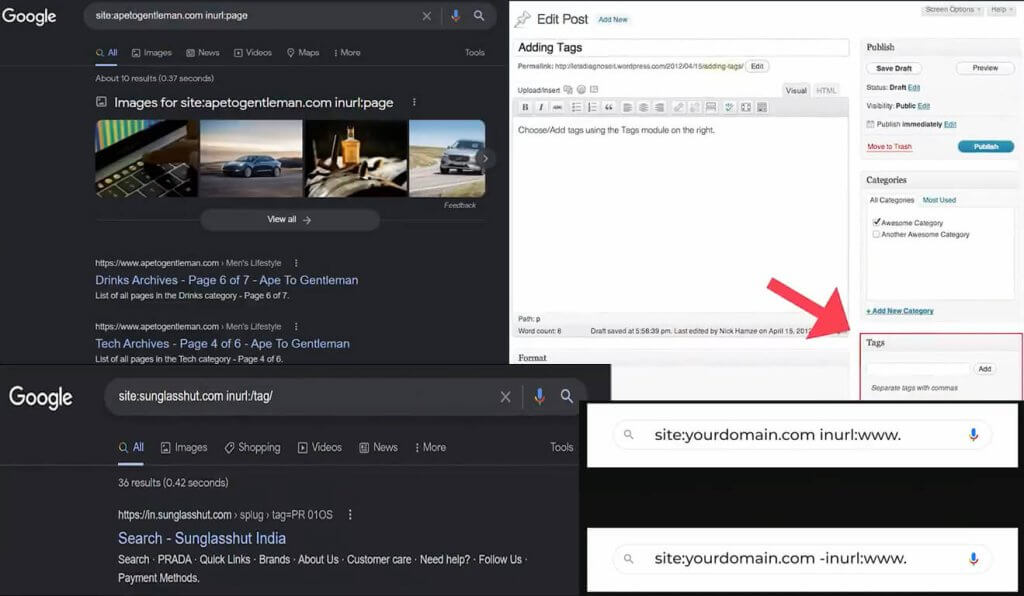
If you have a WordPress blog, index pagination URLs also cause unnecessary duplicate content. Run site: domain name in URL page, to see what junk comes up. Likewise, tag pages, which are so nineties anyways, shouldn’t be indexed. Run site: in URL tag to pull these up.
If you have a non-www site, and you’ve indexed www pages or vice versa, you can use the following commands to bring them up.
And then this one is up for debate, but some people don’t like to index their author pages. Some people like to keep them for EAT. I’ll leave that one up to you, but here’s your command to find them.
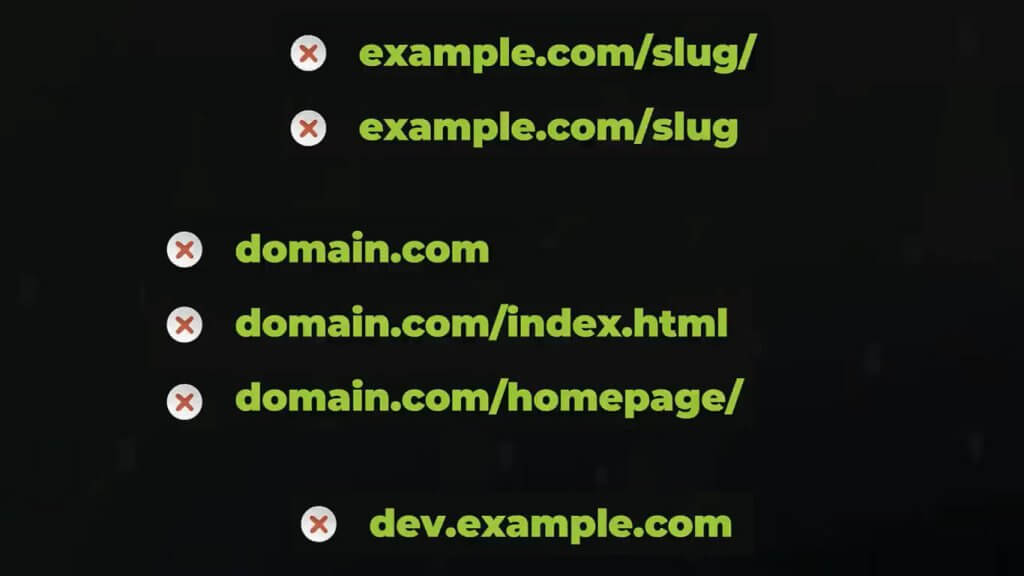
Some other miscellaneous junk pages are when you have the same URL index with and without trailing slashes, and duplicate pages that have the exact same content. This typically applies to home pages. Staging server URLs, and customer-facing URLs like checkout pages. Now that you’ve identified you’ve got some cleaning to do.
ROBOT.TXT SETUP
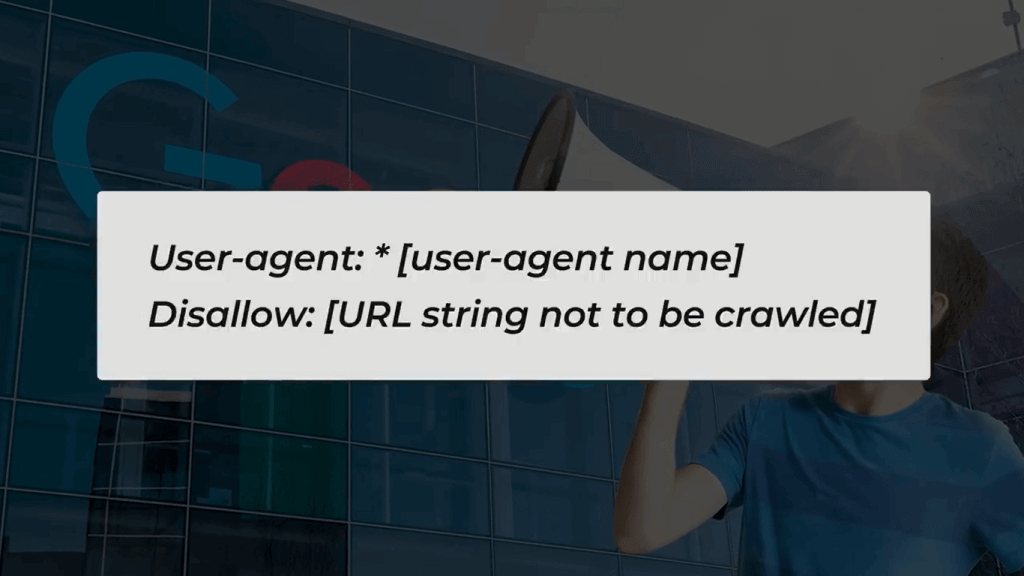
What are your options? The first way to clean up your index and crawl budget issues is with your robots.txt file. In this file, you can straight up tell Google, “You, don’t crawl this page.” This is the basic format you’re supposed to use to block robots from crawling a page.
User-agent is where you specify what robot. The asterisk specifies all robots. Then disallow is used to point out which pages you don’t want to be crawled.
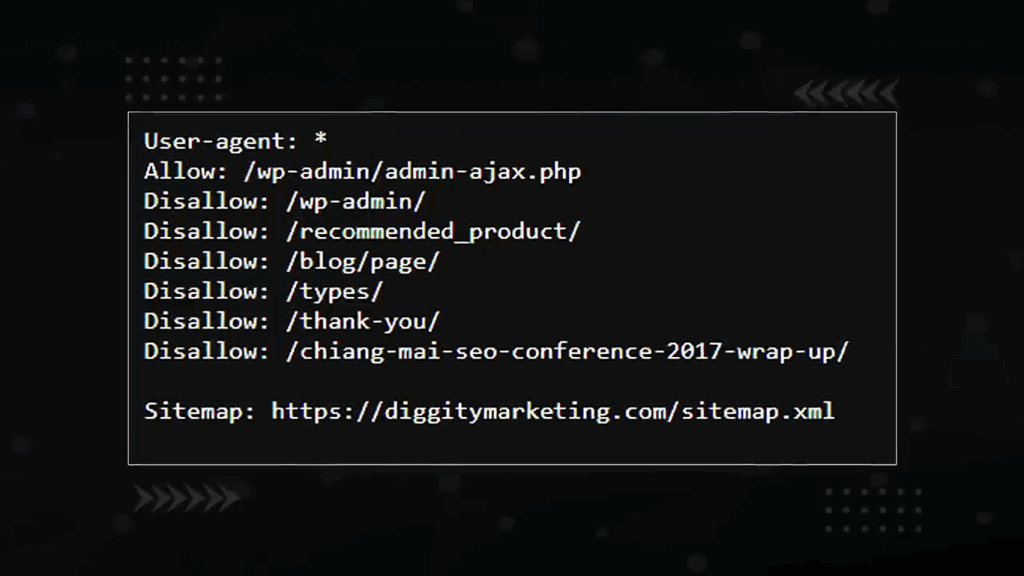
This is what my robots.txt file looks like at diggitymarketing.com. All these disallows are pages I want crawlers to GTFO. Another way to block Google from both crawling and indexing a URL is to use the no-index tag.
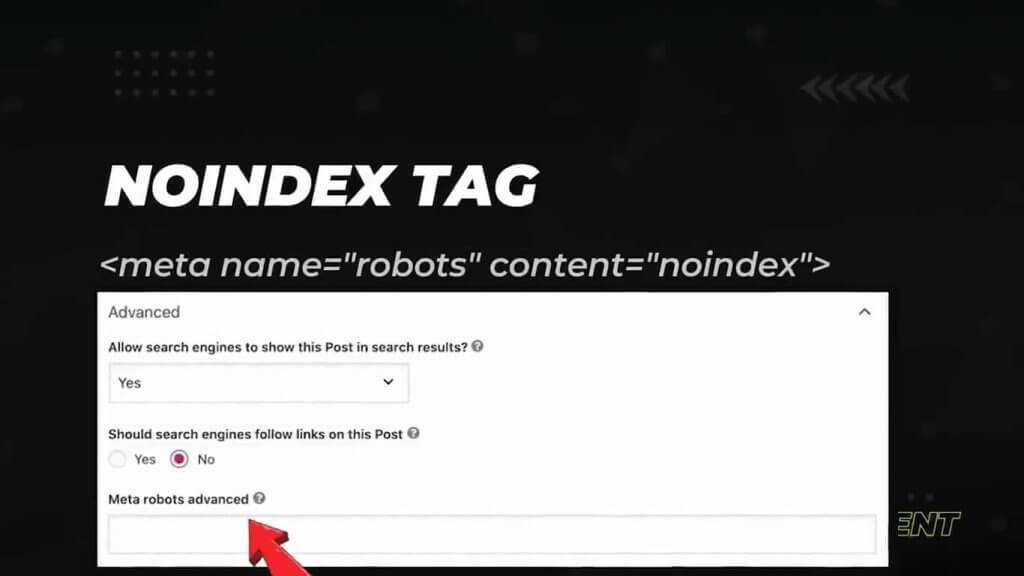
To do this, you write the following code within the head section of your page. If you have an SEO plugin like Yoast, it’s as simple as setting this allows search engines to show this post and search results setting to no.
URL REMOVAL TOOL
Lastly, we have the Google search console URL removal tool, which can be used to surgically remove results from the index. Note, that this will only remove your URLs temporarily. If you have other settings that tell Google to index your content, it’s just gonna come right back. So make sure to double-check.
HREFLANG MULTI-LANGUAGE SETUP

The next technical SEO treat I’m gonna share with you is how to properly set up a multi-language site with hreflang. Now, there’s something I wanna point out to you. This is important, even if you don’t have a multi-language website.
Imagine if you have an English website targeting the U.S. Why not create a new section for the UK, Canada, or Australia, and dominate the search engines for each country? That’s what this site has done.

Just check out the search traffic this site has in each of these countries, and it pulled it off just by copying and pasting its content into different sub-folders for each location. I’ll show you how to do this. Everything I just described is accomplished by using hreflang tags.
Hreflang is an HTML attribute used to tell Google about the country and language a page is targeting. You use it to say, “Hey Google, this page is meant for Italy, and the language is Italian.” If you don’t use hreflang, and you have two versions of the same page, you’re gonna have duplicate content issues.
Imagine if you had a URL targeting the U.S and it was written in U.S English, you know, optimized and spelled with a Z as it should be. And you have another URL targeting the U.K, with a ridiculous spelling of optimized with an S. Unless you tell Google that these are meant for different countries, they’re gonna assume this is dupe content.
But what if you’re not copying English content for separate countries? What if you got an English section and a French section? You still need to roll out hreflang, or you’re gonna piss off Google.
Here’s how to do it, using an example. Install this free Insert Headers and Footer plug-in to be able to quickly edit your page headers.
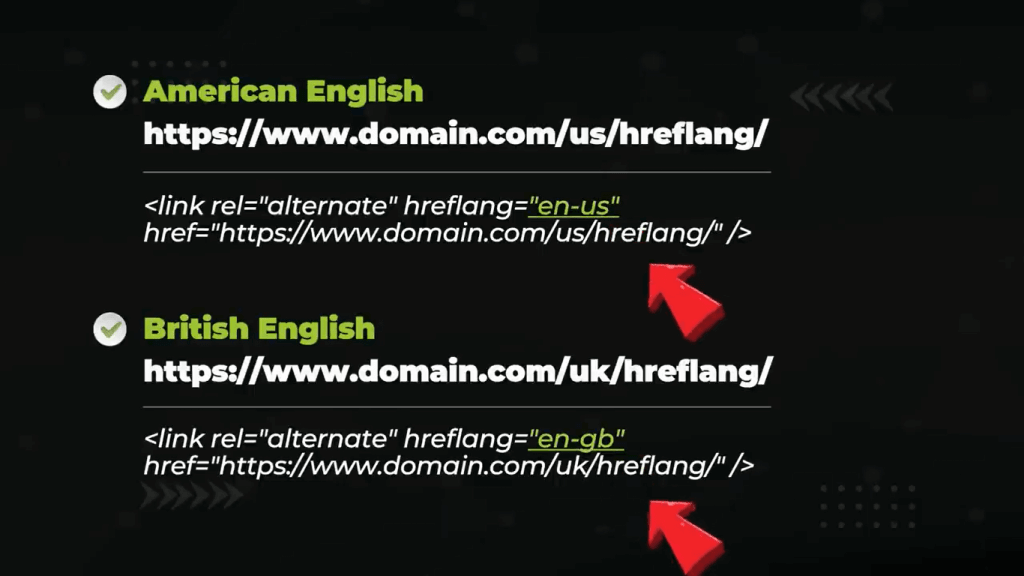
Now let’s say you had two versions of the same page, one for American English and another for British. You’re gonna add the following tags to each of these pages. The important part is the quotes after hreflang. “En” specifies the language, and “us” or “GB” specifies the country.
Let’s say you added a new Danish page and a French page. Then you write all these tags on every single one of these pages. Another way to implement hreflang is to do it with a sitemap.
Go to Erudite’s hreflang sitemap tool and start dumping in the various pages, and the languages and countries they target.
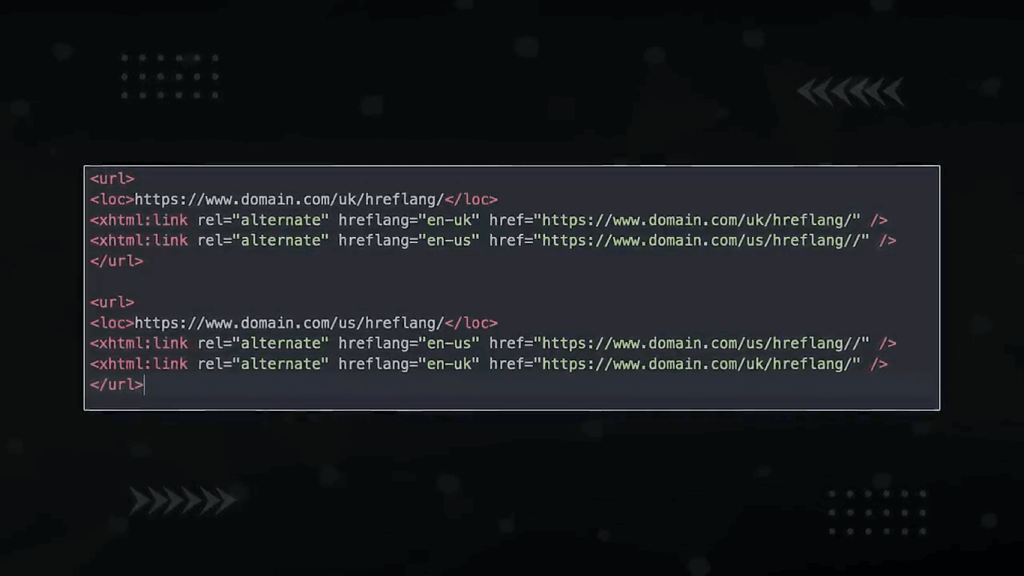
It’s gonna spit out a sitemap like this which you would just add to your current sitemap. Hreflang setup can be tricky, so if you need some help, make sure to reach out to me at thesearchinitiative.com. Speaking about sitemaps, that’s the next SEO pitfall I’d like to talk about.
An XML sitemap is used to tell Google which pages you want them to take notice of and index. Think of it like a table of contents for your website. Without it, Google is just left to its own devices on what pages it will find.
Our client was missing theirs. Aside from telling Google what to index, your sitemap also tells Google what pages are the most important.
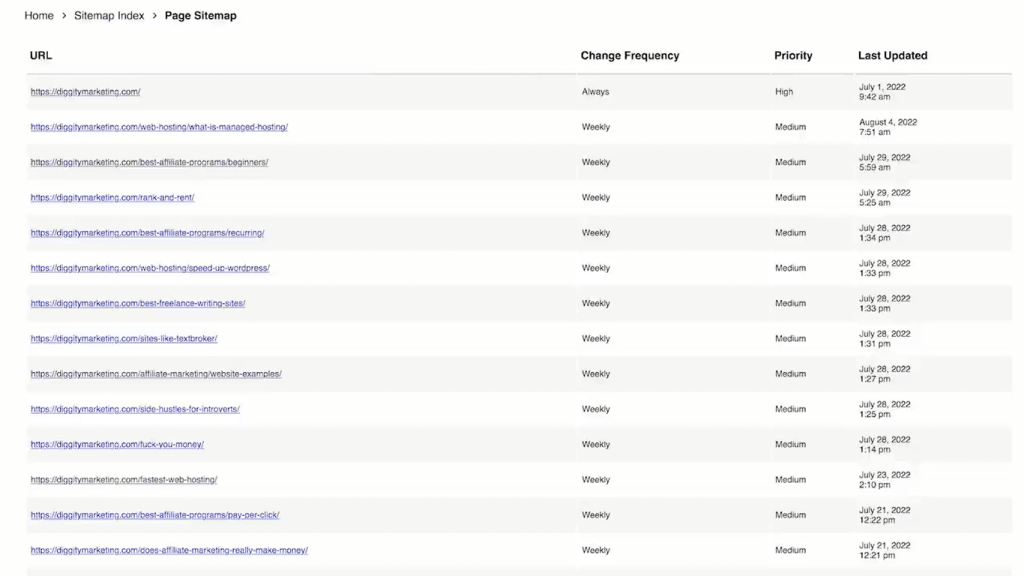
This is what my sitemap looks like. Notice these priorities and the last updated fields. Pages with a higher priority and update frequency get more love from Google’s crawler.
Creating a sitemap is easy. Most likely you have WordPress installed. Install an SEO plugin like Yoast to automatically generate a sitemap.
In the Yoast settings, go to general and then features. Set XML sitemaps to on, and that’s it. You can find your sitemap at yourdomain.com/sitemap.xml.
If you don’t have a CMS like WordPress, and you need help generating a sitemap, leave a comment down below and I’ll make a special video just for you.
Next thing you need to let Google know that you made the sitemap. Head over to Google’s search console and click sitemaps.
Enter the URL of your sitemap and click submit. Now just make sure your robots.txt is referencing that sitemap and you’re good to go, done and done.
CONTENT
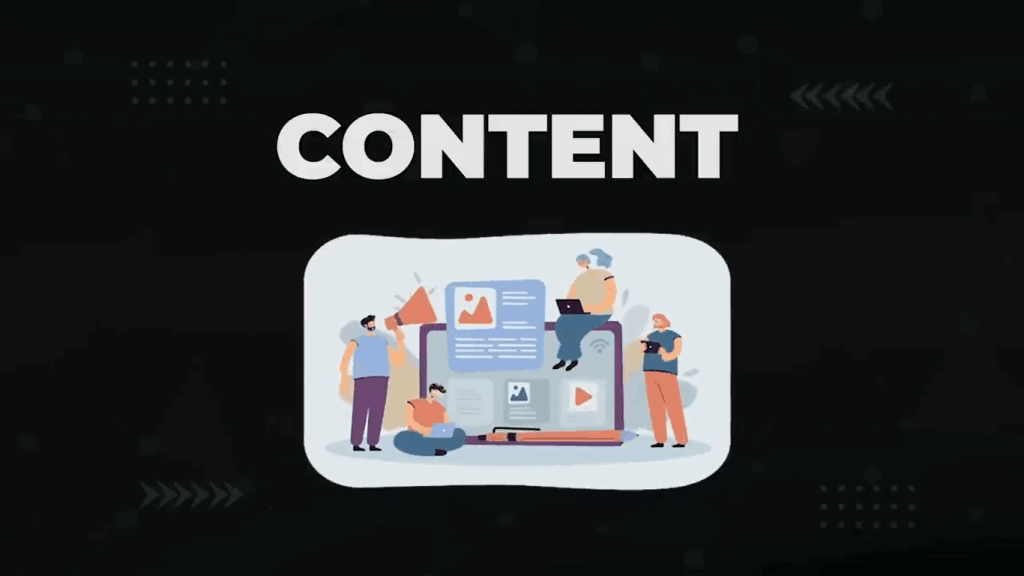
We now move on to the next pillar of the SEO foundation and that’s content. I’d like to explain a fundamental concept of content that you need to understand. If you have a website about fishing, you want Google and your readers to know that you’re an expert fisherman.

One way to do this is to create as much supporting blog content on the topic of fishing, as Google simply cannot deny that you’re a subject matter expert. This is called building topical relevance.
And if you create articles targeting long-tail keywords with low competition, such as guides on how to use certain pieces of fishing equipment, then you can start to pull traffic from these articles.
This is why having a blog on your site is so crucial. And unfortunately, this client hadn’t touched their blog in years.
Finding long-tail keywords Ideas
Here’s how we resurrected it by first finding long-tail keywords to target. Open ahrefs keyword explorer, and type in a broad search term that is related to your niche, set the target location, then click on the magnifying glass button. Term matches are keywords that contain all of the terms from your search term.
Questions are search queries that are phrased as questions. These are really juicy for long-tail opportunities. Also ranked for is a report that displays the other keywords that the top pages for your search term rank for. And also talk about, reports which other topics the top pages discuss.
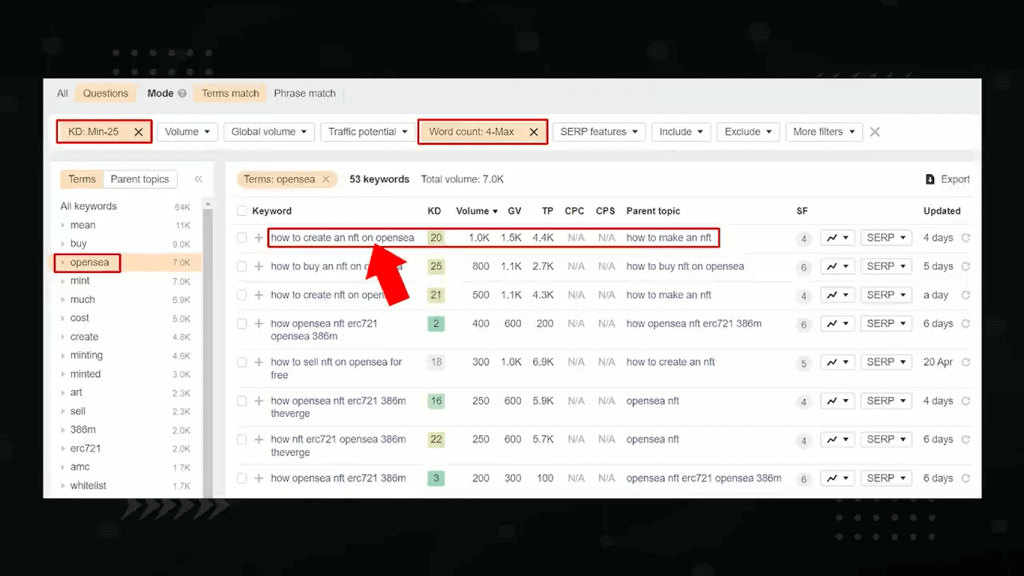
Let’s do a deep dive into the questions. When you open the questions report, filter the keyword list to find easy mode long tails. Use the terms, parent topic, and filter to narrow down the list for specific phrases and words.
Then set a maximum keyword difficulty of 10 if you’re a newer site. You can go higher if you’re established. Then set a minimum word count of four as long-tail keywords tend to have more words, and are more specific.
Now that you find a nice keyword to go after, let’s start the process of writing an article. When it comes to writing your article, I highly recommend using Surfer’s Content Editor.
It’s gonna look at the top articles for your keyword and extract out what exactly are the good things they did to get them to the top of Google. It’s like bowling with the bumper lanes on, you really can’t miss it.
Type in the primary keyword you want to target and set the location. Then click create a content editor. You’re gonna see a page that looks like this. On the left is your writing area, on the right, you’ll see the results of the surface analysis.
It’s figured out how long your content should be, the number of headings, and images, and how often you should use specific words and phrases. Next, you wanna head over to the brief section and figure out who your competitors are.
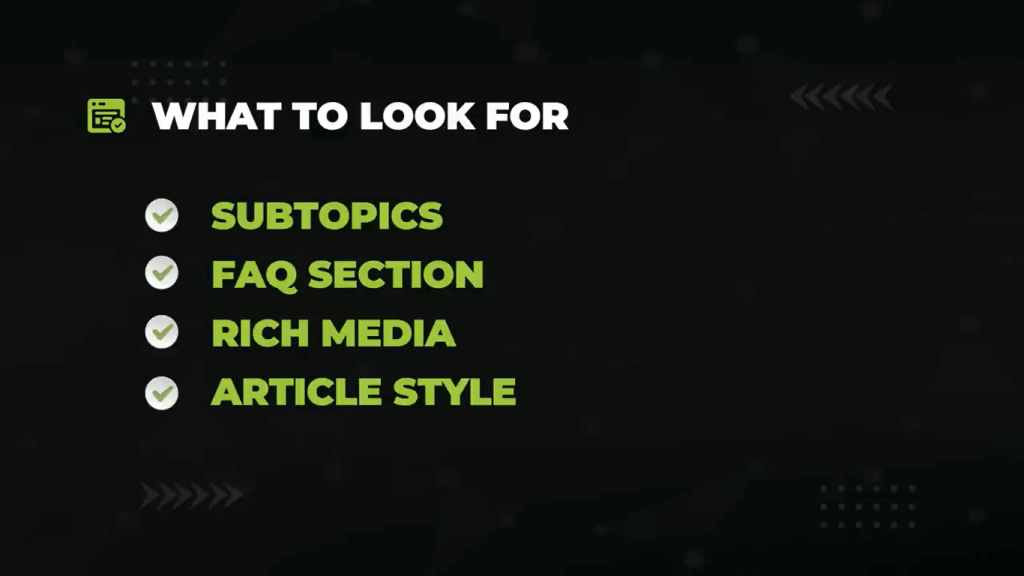
Open these guys up one by one and ask yourself, what subtopics do they cover in their headings? Have they included FAQs? Are there any pieces of additional media such as images and videos that you should include? What style is the article? Is it a listicle or a block of text?
Some other words of advice, don’t pay too much attention to getting a perfect surfer score. Many people get obsessed with getting a 100 while 80 is considered great. I’d rather produce 10 great articles than one perfect article.
Next, don’t forget about internal linking. Once your article is published link out to other relevant articles and have other relevant articles linked to it.
Link Building
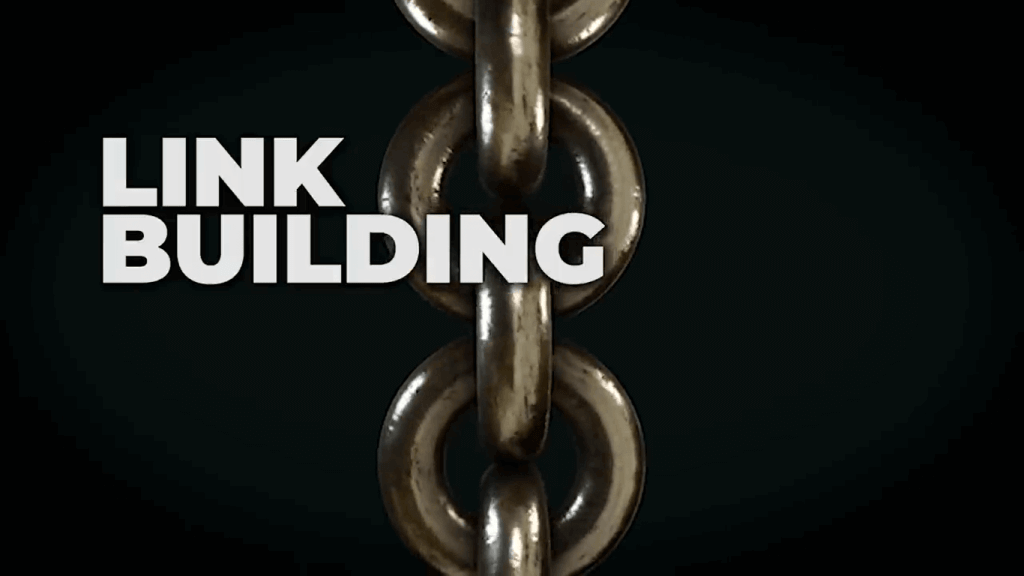
Now we move on to the third pillar of foundational SEO and that’s link building. Many people argue that backlinks are the most important ranking signal on Google’s algorithm.
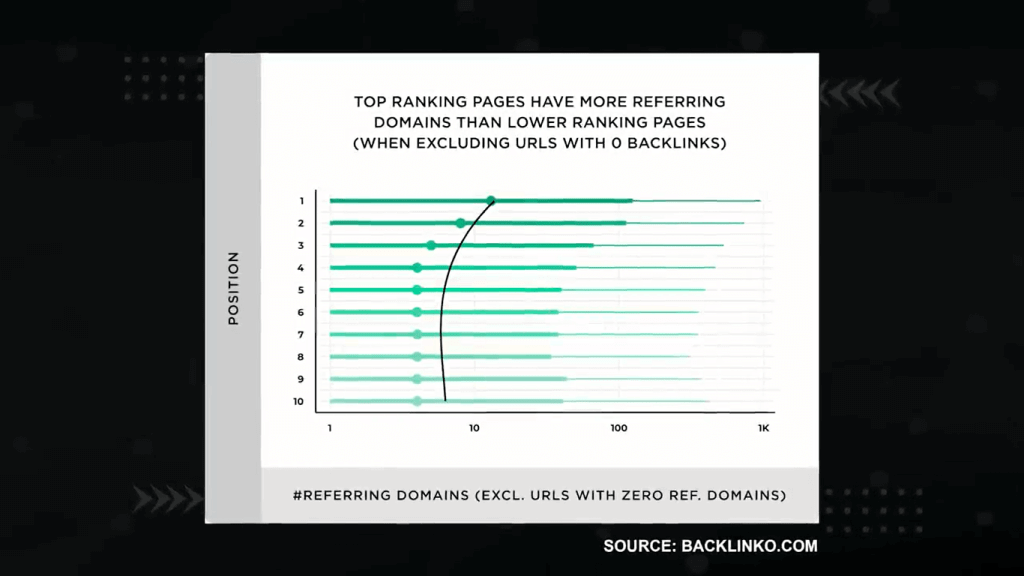
And in this recent study by Backlinko which studied over 11 million websites, they found out the sites in the top positions on Google have more backlinks than those in lower positions. The most effective backlink strategy is to build links to the pages that need them the most.
Our client had little to no backlinks linking to their most important service pages. Here’s what we did to fix it. First, you need to identify which are the most important pages on your site that are in dire need of links.
Go to ahrefs site explorer and enter your domain name at the top. Then you’re gonna select the best by links. This is gonna bring up all the pages on your site, ordered by which ones have the most links. Make sure external is selected, and filter for 200 response code pages.
That means these pages are live. Then sort by ascending. Now use the search filter to hunt down pages that are important to you that have few or even zero links. These are pages that are supposed to be making you money, or at the very least should be getting you traffic.
Now that you’ve identified your target pages, let’s do some blogger outreach to get some links. But what blogs should you be outreaching out to?
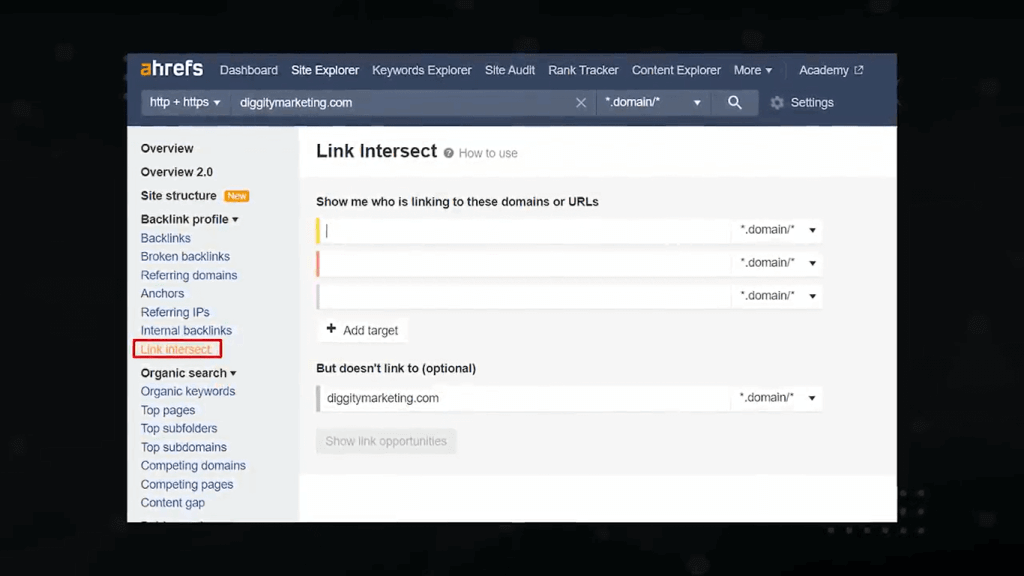
My favorite way to gather link prospects is by using the link intersect tool. Type in three or more competitors up here at the top to pull up a list of sites that link to your competitors, but don’t link to you. Now you need to find their contact emails.
This can be as easy as going to the contact page of the website you wanna the link from. Or you can use the Hunter-Email Finder Extension to get it with a click of a button. Now you need to craft your email pitch. What are you gonna send to these guys to get them to link to you?
OUTREACH PITCH TIPS
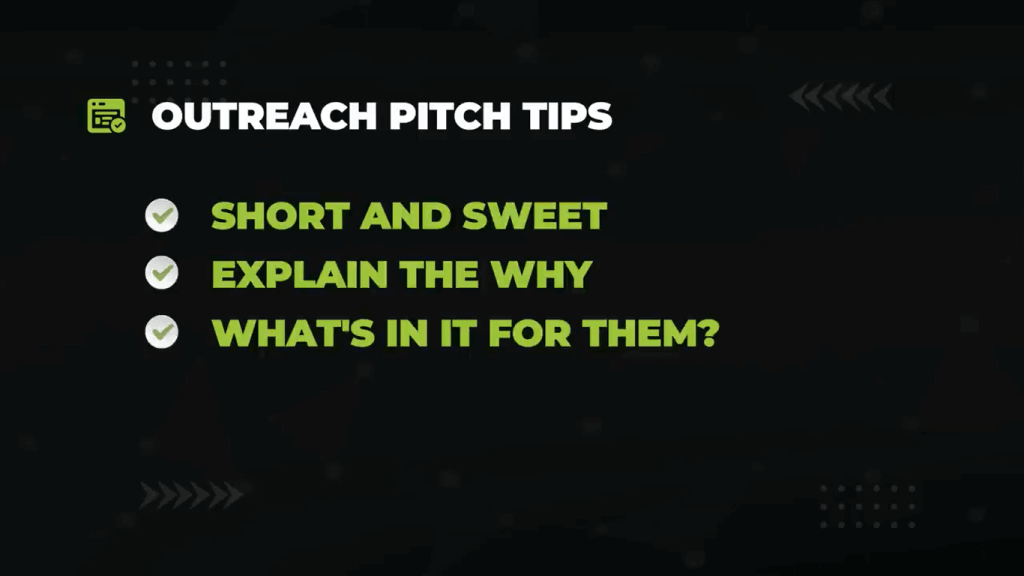
Here are some tips, keep your email short and concise, tell them why you’re contacting them, and explain what’s in it for them.

Here’s an example template you can use. Hello first name, my name is Matt. I’m the founder of website.com. I really enjoyed your research on correlation studies in your article on data-driven SEO, which I came across while doing research on my own article about performance marketing.
But I noticed that you’re linking out to this out-of-date page here. So I wanted to ask if my more up-to-date article might be worth a mention on your page.
Either way, keep up the awesome work, look forward to hearing from you. Once you’ve sent your email, if you haven’t heard back, send a follow-up email. And make sure to monitor your inbox for replies.
Conclusion
So, what were the results after all this effort? We doubled traffic for this client in just eight months.
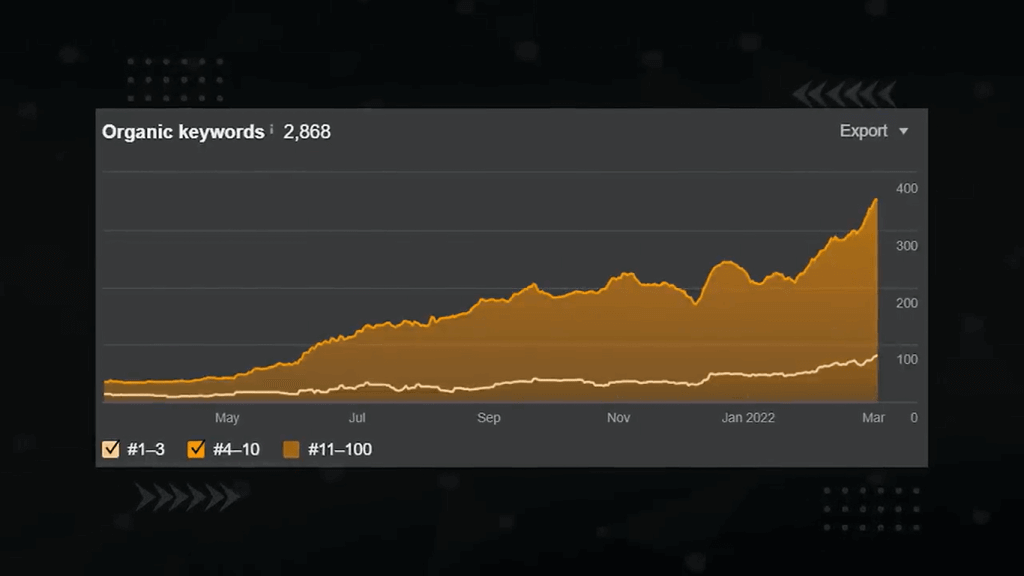
And here’s a number of keywords in the top 10 of Google, which has been skyrocketing. If you’d like us to do this for your site, head on over to thesearchinitiative.com, scroll down to the bottom of the contact form and reach out. We’ll take a look through your site and let you know what we can do for you.
Buy Website Traffic


